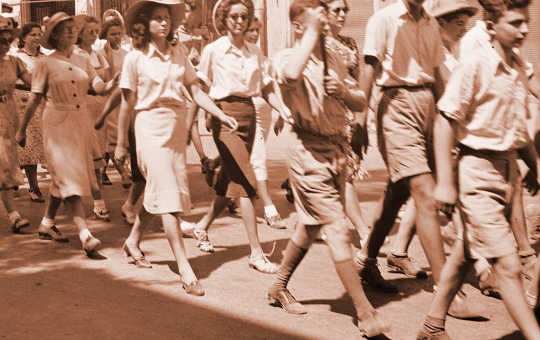
Instead of falling to the Nazi party, Norway broke through to a social democracy. Their history shows us polarization is nothing to despair over.
Donald Trump’s obvious affection for authoritarians is prompting worried comparisons of our polarized country to the polarized Germany of the 1920s and ’30s. Since I’m known to see in polarization both crisis and opportunity, my friends are asking me these days about Hitler, the worst-case scenario.
I grant the possibility of the United States going fascist, but argue that will not happen if we choose the practical steps taken by progressive Nordic social movements when they faced dangerous polarization. Consider the Norwegians, who experienced extreme polarization at the same time as the Germans did.
The Norwegian economic elite organized against striking laborers and produced a polarized country that included both Nazi Brown Shirts goose-stepping in the streets and Norwegian Communists agitating to overthrow capitalism. Many Norwegians were flattered by the Nazi belief that the tall, blue-eyed blonde was the pinnacle of human development. Others vehemently denounced the racism underlying such beliefs.
The politician Vidkun Quisling, an admirer of Hitler, organized in 1933 a Nazi party, and its uniformed paramilitary wing sought to provoke violent clashes with leftist students. But progressive movements of farmers and workers, joined by middle class allies, launched nonviolent direct action campaigns that made the country increasingly un-governable by the economic elite.
Quisling reportedly held discussions with military officers about a possible coup d’etat. The stage was set for a fascist “solution.”
Instead, Norway broke through to a social democracy. The majority forced the economic elite to take a back seat and invented a new economy with arguably the most equality, individual freedom, and shared abundance the developed world has known.
The key to avoiding fascism? An organized left with a strong vision and broad support.
In some ways Norway and Germany were similar: predominantly Christian, racially homogeneous, and suffering hugely in the Great Depression. But Germany’s workers movement failed to make common cause with family farmers, unlike Norway’s alliance. The German left was also split terribly within itself: Communist vs. Social Democratic.
The split was over vision for the new society. One side demanded abolition of capitalism, and the other side proposed partial accommodation. They were unwilling to compromise, and then, when the Social Democrats took power, armed rebellion and bloody repression followed. The result was the Third Reich.
Meanwhile in Norway, the Norwegian Workers’ Party crafted a vision that seemed both radical and reasonable and won majority support for their view despite the dissent of a very small Communist Party. Grassroots movements built a large infrastructure of co-ops that showed their competency and positivity when the government and political conservatives lacked both. Additionally, activists reached beyond the choir, inviting participation from people who initially feared making large changes.
Norwegians also took a different attitude toward violence. They chose nonviolent direct action campaigns consisting of strikes, boycotts, demonstrations, and occupations—a far less fearsome picture than Nazi Brown Shirts and street fighting. Norway therefore lacked the dangerous chaos that in Germany led the middle classes to accept the elite’s choice of Hitler to bring “law and order.”
The Norwegian set of strategies—vision, co-ops, outreach, and nonviolent direct action campaigns—is within the American skill set.
The Movement for Black Lives recently proposed a new vision for the United States that is attracting attention for the scope of its agenda, its commitment to inclusion, and fresh strategic thinking. The Black Lives movement showed its commitment to coalition-building when it gathered in solidarity at Standing Rock this fall, connecting two massive progressive movements.
Standing Rock showed the world march by march how nonviolent direct action campaigns win hearts and minds. And Bernie Sanders’ gift to electoral politics is an inspired, energized, unified movement built around the desire for economic equality and opportunity. He pulled people from the right as well as the left.
The election is spurring many more people to be involved in struggle, and infrastructure like co-ops are prospering. Polarization is nothing to despair over. It’s just a signal that it’s time for progressives to start organizing.
About The Author
George Lakey wrote this article for Why Science Can’t Be Silent, the Spring 2017 issue of YES! Magazine. George recently retired from Swarthmore College, where he was Eugene M. Lang Visiting Professor for Issues in Social Change. While there, he wrote “Viking Economics” after interviewing economists and others in the Nordic countries. It is the ninth among his books, all of which have been about change and how to achieve it.
Books by this Author
at InnerSelf Market and Amazon
























